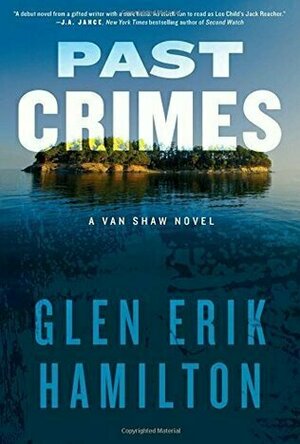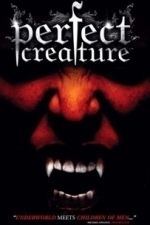Search
Ross (3284 KP) rated Smoke and Summons in Books
Mar 18, 2019 (Updated Mar 18, 2019)
Flintlock Tangled
It took me a while to realise, but this book is basically a re-telling of Tangled, the Rapunzel Disney film.
We have the young girl with magical powers who is held prisoner (though she has been trained to appreciate her captor's benevolence) by someone wanting to benefit from her powers. She meets a ne'er-do-well thief looking for that one last score before he can move and settle down. They travel together trying to find somewhere safe for her to go but are tracked down at all stops, until finally the male protagonist is persuaded to hand her in and reap the rewards, before the inevitable emotional rescue.
Rather than magical healing hair, however, Sandis has the ability to act as a vessel to demons, and is linked to a specific one (a fire horse). Her captor, Kazen, uses her abilities to bolster his gangster crew and lead the city's underworld. Upon sensing Kazen's desire to summon a more powerful demon (which is likely to kill her) she escapes and becomes embroiled with Rone, a young thief.
Together they try to track down a family member Sandis has become aware of, who may be able to help save her.
The story flows quite well, with enough strength in the main characters to engage the reader. Their travails, and Kazen's crew's neverending chase, are enjoyable and thrilling.
The narrative is good, swapping between Sandis' and Rone's perspectives and telling of their increasing tiredness and running out of options. At times, the author's American tone slips in (words like "Mom", "they were a ways from their lodgings" etc), which would normally be fine, I'm not that big of a snob, but it really comes at odds with the majority of the narrative and does stand out.
The setting is more early industrial revolution than more medieval, so there is the use of firearms to spice up the action.
A few times, events become a little hard to accept - quite how quickly and persistently Kazen's goons catch up with them, and how easily Rone manages to accomplish his rescue seem quite hard to believe.
Overall, the story is good and while the format of "lets go here, oh they've somehow found us again" becomes a little tiring, the book is short enough for this not to be too much of an issue.
We have the young girl with magical powers who is held prisoner (though she has been trained to appreciate her captor's benevolence) by someone wanting to benefit from her powers. She meets a ne'er-do-well thief looking for that one last score before he can move and settle down. They travel together trying to find somewhere safe for her to go but are tracked down at all stops, until finally the male protagonist is persuaded to hand her in and reap the rewards, before the inevitable emotional rescue.
Rather than magical healing hair, however, Sandis has the ability to act as a vessel to demons, and is linked to a specific one (a fire horse). Her captor, Kazen, uses her abilities to bolster his gangster crew and lead the city's underworld. Upon sensing Kazen's desire to summon a more powerful demon (which is likely to kill her) she escapes and becomes embroiled with Rone, a young thief.
Together they try to track down a family member Sandis has become aware of, who may be able to help save her.
The story flows quite well, with enough strength in the main characters to engage the reader. Their travails, and Kazen's crew's neverending chase, are enjoyable and thrilling.
The narrative is good, swapping between Sandis' and Rone's perspectives and telling of their increasing tiredness and running out of options. At times, the author's American tone slips in (words like "Mom", "they were a ways from their lodgings" etc), which would normally be fine, I'm not that big of a snob, but it really comes at odds with the majority of the narrative and does stand out.
The setting is more early industrial revolution than more medieval, so there is the use of firearms to spice up the action.
A few times, events become a little hard to accept - quite how quickly and persistently Kazen's goons catch up with them, and how easily Rone manages to accomplish his rescue seem quite hard to believe.
Overall, the story is good and while the format of "lets go here, oh they've somehow found us again" becomes a little tiring, the book is short enough for this not to be too much of an issue.
Lesley (60 KP) rated A Steep Price in Books
Aug 10, 2018
Tracy Crosswhite never disappoints!
I LOVE Tracy Crosswhite and this newest entry into the series was no exception. I laughed, I cried, I gasped. This is the review that I posted on my blog.
Moving right along. My beloved Tracy Crosswhite is back for book #6, A Steep Price. Every time Robert Dugoni releases a new book in this series, I feel like I get to see old friends again. Kins, Vic, Faz, Dan, Dan's DOGS!, and of course Tracy herself. I love this series because it feels authentic, manages to remain heartwarming in the face of grim subject matters, and really makes you care about the characters.
This time around, Tracy and Kins are investigating the death of a young Indian woman whose best friend has reported her missing after delivering some life-changing news. Unfortunately, when she is found murdered in a shallow grave in the park, it creates more questions than answers. As they delve deeper into her life, they find a lot of ambition that was hampered by her familys societal expectations, her grim determination to raise money for medical school at any cost despite her parents wishes to return home and accept an arranged marriage, and the seedy underworld of "Sugar Dating", which has enough loopholes to escape being classified as prostitution, despite being dangerous and borderline sex work. Tracy is feeling threatened and on edge due to their newest team member, another female who seems to be snooping in private files and isn't honest about the circumstances of an officer-involved shooting in the case that Vic and Faz are tackling currently. A young activist woman who spoke out against gangs and the drug trade in her underprivileged area gets shot and killed. The guys think it's connected to a local gang leader whose father they put in prison years earlier. The hotter the trail gets, the more in danger they are. Little Jimmy blames them for putting his dad away, and for his subsequent death in prison when a rival gang member stabbed him. Just as things are reaching a boiling point, Tracy and Kins figure out exactly who their killer is and they're hot on the trail. The book, like the others in the series, was a fun, fast-paced read with heart and a satisfying conclusion. I highly recommend starting this series!
Moving right along. My beloved Tracy Crosswhite is back for book #6, A Steep Price. Every time Robert Dugoni releases a new book in this series, I feel like I get to see old friends again. Kins, Vic, Faz, Dan, Dan's DOGS!, and of course Tracy herself. I love this series because it feels authentic, manages to remain heartwarming in the face of grim subject matters, and really makes you care about the characters.
This time around, Tracy and Kins are investigating the death of a young Indian woman whose best friend has reported her missing after delivering some life-changing news. Unfortunately, when she is found murdered in a shallow grave in the park, it creates more questions than answers. As they delve deeper into her life, they find a lot of ambition that was hampered by her familys societal expectations, her grim determination to raise money for medical school at any cost despite her parents wishes to return home and accept an arranged marriage, and the seedy underworld of "Sugar Dating", which has enough loopholes to escape being classified as prostitution, despite being dangerous and borderline sex work. Tracy is feeling threatened and on edge due to their newest team member, another female who seems to be snooping in private files and isn't honest about the circumstances of an officer-involved shooting in the case that Vic and Faz are tackling currently. A young activist woman who spoke out against gangs and the drug trade in her underprivileged area gets shot and killed. The guys think it's connected to a local gang leader whose father they put in prison years earlier. The hotter the trail gets, the more in danger they are. Little Jimmy blames them for putting his dad away, and for his subsequent death in prison when a rival gang member stabbed him. Just as things are reaching a boiling point, Tracy and Kins figure out exactly who their killer is and they're hot on the trail. The book, like the others in the series, was a fun, fast-paced read with heart and a satisfying conclusion. I highly recommend starting this series!
Darren (1599 KP) rated Perfect Creature (2006) in Movies
Oct 24, 2019
Characters – Silus is the vampire from the brotherhood, he has a connection with his brother Edgar and will not let him take over once he becomes the blood thirty infected version of himself. Lilly is the nonsense cop that has suffered her own share of heartache with the viruses in the world, she doesn’t take any shit from anyone she believes to be guilty. Edgar is the brother of Silus that has become infected while trying to find the next cure for the human and Brotherhood medical problems which makes him the first member of the brotherhood to kill a human.
Performance – Dougray Scott is fine without being that impactful in the leading role and the same could be said for Saffron Burrows, the highlight of the film would be Leo Gregory as the Edgar the bloody thirsty crazy vampire.
Story – The story does feel like it could be another chapter of the Underworld saga, it has the vampires of the world living in peace with the humans but when one goes rogue it becomes personal. This isn’t the most original and strays too far into the middle of the fantasy world we are trying so desperately to head towards. We don’t find enough time to create the fantasy world that could become a franchise let alone a new story because in the end this could have just been a crime thriller.
Action/Fantasy/Horror – The action is fine, it mostly contains fights that try to offer an extra punch where needed but isn’t the most original, while the fantasy world doesn’t click for the story we are experiencing, the horror is tame too with it only being a couple of vampire like moments.
Settings – We have murky settings which is designed to show us the different in class between the two races.
Special Effects – The effects are all fine and at least the film doesn’t turn into a bad CGI moment film.
Scene of the Movie – The special gun that instant sleeps and enemy.
That Moment That Annoyed Me – It just doesn’t seem to feel fresh in any way.
Final Thoughts – Disappointing movie that doesn’t connect with the audience on the levels it could have because it wants to be a fantasy film but plays out only like a dark crime thriller.
Overall: Disappointing film.
Performance – Dougray Scott is fine without being that impactful in the leading role and the same could be said for Saffron Burrows, the highlight of the film would be Leo Gregory as the Edgar the bloody thirsty crazy vampire.
Story – The story does feel like it could be another chapter of the Underworld saga, it has the vampires of the world living in peace with the humans but when one goes rogue it becomes personal. This isn’t the most original and strays too far into the middle of the fantasy world we are trying so desperately to head towards. We don’t find enough time to create the fantasy world that could become a franchise let alone a new story because in the end this could have just been a crime thriller.
Action/Fantasy/Horror – The action is fine, it mostly contains fights that try to offer an extra punch where needed but isn’t the most original, while the fantasy world doesn’t click for the story we are experiencing, the horror is tame too with it only being a couple of vampire like moments.
Settings – We have murky settings which is designed to show us the different in class between the two races.
Special Effects – The effects are all fine and at least the film doesn’t turn into a bad CGI moment film.
Scene of the Movie – The special gun that instant sleeps and enemy.
That Moment That Annoyed Me – It just doesn’t seem to feel fresh in any way.
Final Thoughts – Disappointing movie that doesn’t connect with the audience on the levels it could have because it wants to be a fantasy film but plays out only like a dark crime thriller.
Overall: Disappointing film.
Gareth von Kallenbach (980 KP) rated Papillon (2018) in Movies
Jul 2, 2019
Henry “Papillon” Charriere (Charlie Hunnam) is a safecracker making his name in the Parisian underworld. But when he decides to keep some diamonds from a big score to himself his luck changes. He is framed for a murder and given a life sentence. Even worse for Papillon is that he is being shipped to the Devil’s Island penal colony in French Giana. With no chance at an appeal his only chance at freedom is to escape. On the long boat ride from France to South America he finds an unlikely ally in the form of the forger Louis Dega (Rami Malek). The slight and awkward Dega does not want to escape but rather just survive long enough to have his appeal heard. Papillon agrees to protect Dega in exchange for financing any escape plan Papillon can devise. With Dega’s financial backing Papillon now only has to figure out how to escape from prison no one has been known to escape from on an island surrounded by rivers and ocean, unforgiving jungle and guards who shoot to kill.
Papillon is based on a true story and adapted from the novels “Papillon” and “Banco” written by Charriere himself. This is the second film adaptation of these novels. The other film, also Papillon, is from 1973 stared Steve McQueen and Dustin Hoffman. I have not seen the 1973 version but I did enjoy the story and could be worth viewing to get another directors vision.
The 2018 version is powered but a captivating story of survival and the unlikely friendship of two men thrust together in a harsh environment. Both Hunnam (King Arthur, Pacific Rim) and Malek (Mr. Robot – TV Series, Night at the Museum) give excellent performances. The rest of the cast is okay but these two stars give great performances. Danish director Michael Noer (R, Northwest) does a decent job in the telling of the story visually. There was blood in one scene that was a pink colored and did not look anything like blood and that was a little distracting. The prison seemed realistic and grimy, but also weirdly bright.
Overall I enjoyed this film. I didn’t have any expectations going in and was pleasantly surprised but interesting story. At 2 hours and 13 minutes it does seem a bit too long. This would be a film I would enjoy watching at home and not necessarily something I would spend theater money on.
Papillon is based on a true story and adapted from the novels “Papillon” and “Banco” written by Charriere himself. This is the second film adaptation of these novels. The other film, also Papillon, is from 1973 stared Steve McQueen and Dustin Hoffman. I have not seen the 1973 version but I did enjoy the story and could be worth viewing to get another directors vision.
The 2018 version is powered but a captivating story of survival and the unlikely friendship of two men thrust together in a harsh environment. Both Hunnam (King Arthur, Pacific Rim) and Malek (Mr. Robot – TV Series, Night at the Museum) give excellent performances. The rest of the cast is okay but these two stars give great performances. Danish director Michael Noer (R, Northwest) does a decent job in the telling of the story visually. There was blood in one scene that was a pink colored and did not look anything like blood and that was a little distracting. The prison seemed realistic and grimy, but also weirdly bright.
Overall I enjoyed this film. I didn’t have any expectations going in and was pleasantly surprised but interesting story. At 2 hours and 13 minutes it does seem a bit too long. This would be a film I would enjoy watching at home and not necessarily something I would spend theater money on.

The Godfather Game
Games and Stickers
App
For the first time ever, The Godfather officially comes to you as a brand new mobile game in an...

Tomb Raider Definitive Edition
Video Game
Tomb Raider is an action-adventure video game developed by Crystal Dynamics and published by Square...
Tomb Raider Definitive Edition

Gangster Rio City: Crime Simulator 3D Full
Games
App
The rivalry between criminals and police takes a new twist! Build your own crime business in Rio!...

Past Crimes
Book
When his estranged grandfather is shot and left for dead, an Army Ranger plunges into the criminal...
Lyndsey Gollogly (2893 KP) rated Gods & Monsters ( Book 1) in Books
Feb 12, 2023
16 of 235
Kindle
Gods & Monsters ( Book 1)
By Janie Marie
⭐️⭐️⭐️
Monsters are real, legends are truth—and the man who saves Jane's life is an immortal knight. But it will be her secret past with the Angel of Death that changes everything.
Gods & Monsters - Book One
When the plague of all plagues begins its destruction, it isn't a miracle cure by scientists or even our military that saves us.
No, our saviors are monsters.
Jane appears to be nothing special. In fact, she's a sad sight to behold. Afflicted by the sorrow of her tragic past and failing marriage, the young mother of two is as terrified as every other soul when humanity faces doom. Yet, when hope seems lost, Jane does something even her estranged husband fails to--she fights. And she's not alone.
David and his companions are what our world has dismissed as mere legend. Their duty to the human race brings them across the country, and they all know it is no coincidence when they cross paths with Jane.
As it happens, Jane is special. She's destined to rid the world of darkness.
With monsters from every nightmare seeking her out, a noble immortal knight showing her what love truly feels like, a secret past that even Jane can't remember, and even more powerful beings wagering the fate of her soul, Jane will embark on an epic journey to save her family and the world.
So what will happen when they realize she's the greatest monster of them all?
Gods✔️ monsters ✔️ Arthur and his nights as immortals ✔️ what’s not to love right? Well I’m stuck as I wanted to give it 4 stars but there were a few draw backs for me the main one being it felt rushed in some places and sometimes abit over explained and slightly cheesy! But I absolutely love all the gods and mythology and all at war. All on sides you don’t expect I was enjoying the book then bam Hades and yea I’m a sucker for the God of the underworld!
Warnings: Triggers for abuse, sa, mental health disorders. Heavy violence, horror, strong language, emotional and controversial themes, sex, rape(not praised), will have multiple loves for the heroine.
Kindle
Gods & Monsters ( Book 1)
By Janie Marie
⭐️⭐️⭐️
Monsters are real, legends are truth—and the man who saves Jane's life is an immortal knight. But it will be her secret past with the Angel of Death that changes everything.
Gods & Monsters - Book One
When the plague of all plagues begins its destruction, it isn't a miracle cure by scientists or even our military that saves us.
No, our saviors are monsters.
Jane appears to be nothing special. In fact, she's a sad sight to behold. Afflicted by the sorrow of her tragic past and failing marriage, the young mother of two is as terrified as every other soul when humanity faces doom. Yet, when hope seems lost, Jane does something even her estranged husband fails to--she fights. And she's not alone.
David and his companions are what our world has dismissed as mere legend. Their duty to the human race brings them across the country, and they all know it is no coincidence when they cross paths with Jane.
As it happens, Jane is special. She's destined to rid the world of darkness.
With monsters from every nightmare seeking her out, a noble immortal knight showing her what love truly feels like, a secret past that even Jane can't remember, and even more powerful beings wagering the fate of her soul, Jane will embark on an epic journey to save her family and the world.
So what will happen when they realize she's the greatest monster of them all?
Gods✔️ monsters ✔️ Arthur and his nights as immortals ✔️ what’s not to love right? Well I’m stuck as I wanted to give it 4 stars but there were a few draw backs for me the main one being it felt rushed in some places and sometimes abit over explained and slightly cheesy! But I absolutely love all the gods and mythology and all at war. All on sides you don’t expect I was enjoying the book then bam Hades and yea I’m a sucker for the God of the underworld!
Warnings: Triggers for abuse, sa, mental health disorders. Heavy violence, horror, strong language, emotional and controversial themes, sex, rape(not praised), will have multiple loves for the heroine.





